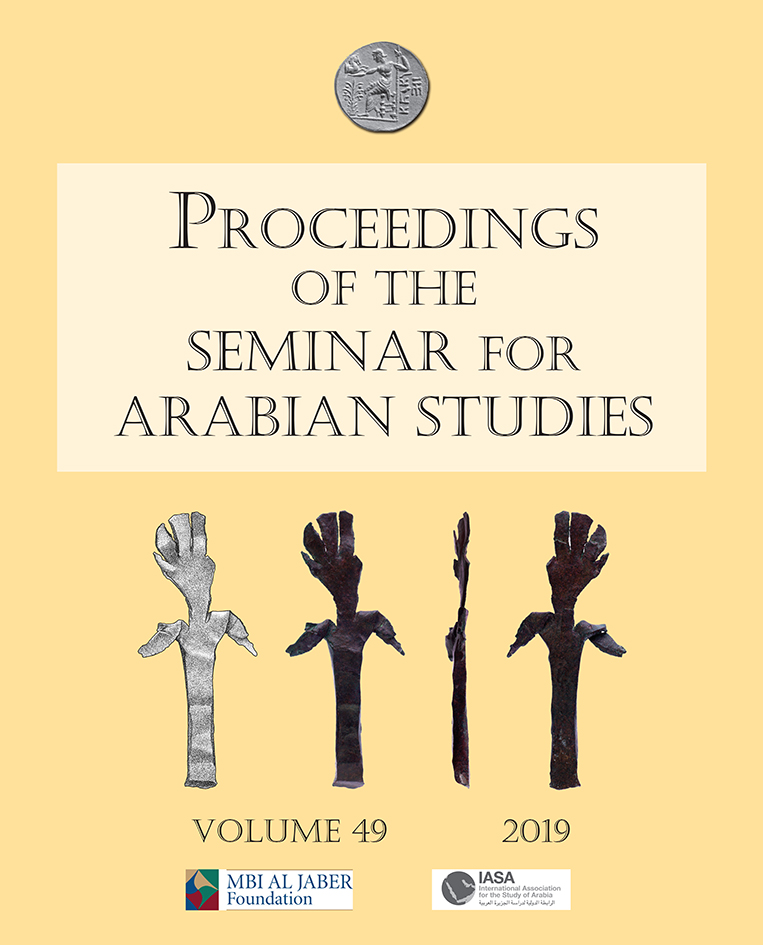Triliths, the stone monuments of southern Arabia: preliminary results and a path towards interpretation
Keywords:
Triliths, Arabian archaeology, Oman, Yemen, stone monumentsAbstract
Triliths are stone monuments distributed in the landscape throughout the coastal highlands of southern Arabia, from Ḥaḍramawt in Yemen to Raʾs al-Ḥādd in Oman. They consist of three standing flat stones forming a pyramid which stands in line with others on a low platform complemented by arranged square-shaped boulders and large fireplaces. Triliths’ site stone compositions mark a special space of particular meaning for rituals we still do not know. They were 14C dated (from the charcoal of the fireplaces) to the Late Iron Age period (200 BC–AD 400). The interpretation is challenging due to a lack of underlying archaeological evidence. The first in-depth study on the triliths of southern Arabia yielded a consolidated trilith dataset of 554 trilith sites consisting of 2162 trilith clusters. It showed great variability in the spatial configuration of trilith elements, architectural design, and level of preservation. The increased number of trilith sites has started to reveal trails of mobility across southern Arabia. Some trilith sites are exceptional in size and unique in layout, which needs further attention. Field missions in Oman are planned in 2018–2020 to collect more relevant data, challenge trilith chronology, and test existing trilith interpretation hypotheses.
Published
How to Cite
Issue
Section
License
Archaeopress Publishing, Oxford, UK


